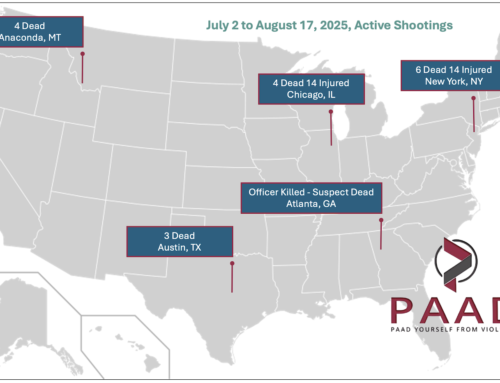Peeler Group International provides training on understanding attacker behaviors, which is essential for establishing effective mitigation plans and responses. This training is available to our internal staff and through our open-enrollment courses for outside organizations. I’m happy to share some insights from this training with you.
Understanding Threat Behavior: Identifying Attackers Effectively
Understanding and profiling potential attackers is a crucial part of threat assessment, but it’s important to note that no actual, one-size-fits-all profile exists. Attackers can come from various backgrounds with different motives and personal histories. However, by analyzing data and identifying common behavioral characteristics, we can create a Protective Intelligence Profile—an individualized profile that helps us anticipate potential threats.
No True Profile Exists: It’s a common misconception that attackers fit into a specific, predictable profile. The reality is far more complex. Each individual is unique, and a wide range of personal, social, and psychological factors influence their motivations and actions. Therefore, while we can use data to guide our assessments, we must remain open-minded and adaptable in our approach.
Protective Intelligence Profile – Individualized Profile: Even though there’s no single profile, generalized patterns have emerged from analyzing historical data on attackers. These patterns can provide some insights:
- Gender: Historically, most attackers have been male, accounting for approximately 86% of cases. This statistic can help direct our focus but should not exclude the possibility of female attackers.
- Race: About 77% of identified attackers have been white. This is another pattern that emerges from the data, though it should be noted that attackers can come from any racial background.
- Age: Attackers’ ages have ranged from as young as 16 to as old as 73, with a mean age of 35.0 years. This broad age range indicates that attackers can strike at virtually any life stage, but the mean suggests a slight concentration around early adulthood to middle age.
- Marital Status: Around 51% of attackers were single and never married. This statistic might reflect factors such as social isolation or a lack of close personal relationships, which could contribute to their behavior.
- Children: About 61% of attackers had no children. This detail may indicate fewer family ties or responsibilities, potentially impacting their decision-making and the consequences they consider when planning an attack.
These characteristics are not definitive or exclusive; they provide a framework for understanding potential threats and should be used cautiously. The key to effective threat assessment is recognizing that, while patterns can offer valuable insights, each case must be evaluated on its own merits.
We can build a comprehensive and individualized threat profile by integrating data analysis, behavioral insights, and situational awareness.
Understanding behavior is the only reliable approach because it allows us to assess the intent and likelihood of an individual’s actions. Behavior provides real-time indicators that predict potential threats, making it essential to anticipate and mitigate threats effectively.
About Bill Peeler
Bill Peeler is the founder and driving force behind Peeler Group International, bringing four decades of global experience in executive protection, investigations, and risk management.
Widely regarded as a trusted leader in the security field, Bill’s success stems from long-standing client partnerships built on trust, discretion, and results. His commitment to operational excellence continues to shape PGI’s service offerings from high-level protective operations and comprehensive investigations to specialized training programs that elevate industry standards.
Bill leads by example, guiding PGI’s global presence with integrity, adaptability, and a clear mission: to safeguard people, reputations, and organizations in an increasingly complex world.






